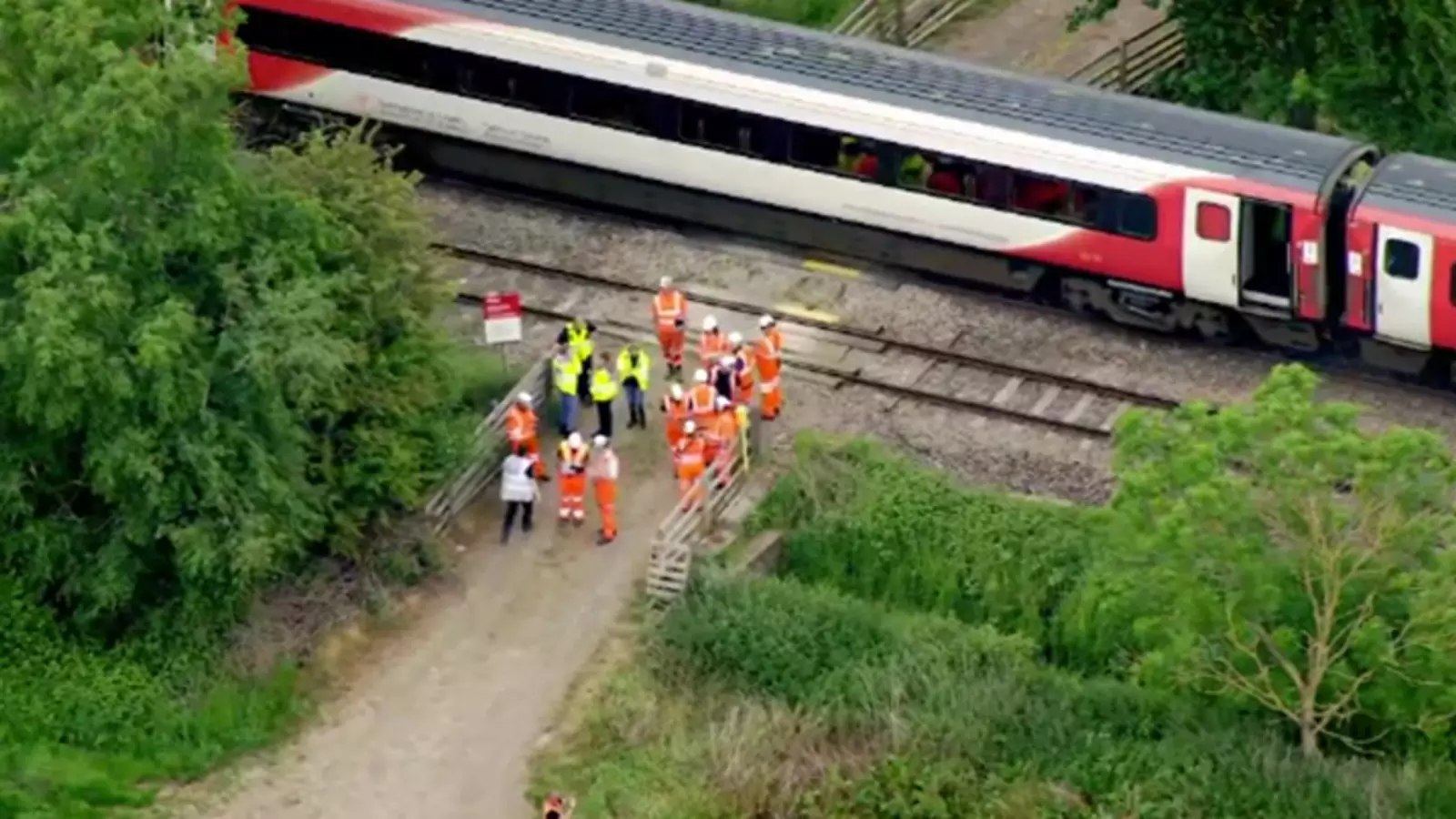In a deeply unsettling turn of events, a quiet Thursday morning in Herefordshire erupted into chaos as a train collided with an agricultural trailer at a user-operated level crossing. This incident leaves one questioning the overall safety protocols governing such crossings and their implications for the future of railway travel in the UK. The collision not only raised alarms for the emergency services but also for the countless passengers who put their trust in the rail system daily.
Among the injured were two individuals, one of whom was airlifted to a hospital, triggering a full-scale response from British Transport Police, West Midlands Ambulance Service, and local firefighters. While it is a relief to report that many of the train passengers were merely assessed and allowed to go home, the incident starkly reminds us of the precariousness of train travel—a transport mode we often take for granted.
The Aftermath and Accountability
As reports filter in, a 32-year-old man has been arrested on suspicion of endangering safety on the railway, emphasizing the dire importance of accountability in such unforeseen circumstances. It raises a pivotal question: What factors led to this lapse in safety? User-controlled level crossings can often be spots of neglect, demanding greater scrutiny and perhaps a complete reevaluation of their operational procedures. In an age when automation and oversight are becoming the norms in various sectors, how can we still justify leaving such critical safety measures in the hands of individuals?
Moreover, the incident disrupted train travel between Hereford and Craven Arms, forcing authorities to implement replacement transport systems. What could have been a simple journey for many metamorphosed into a logistical headache. Travelers now must adjust their plans and expectations due to a catastrophe that could have been mitigated with better oversight.
The Role of Institutional Oversight
The Rail Accident Investigation Branch (RAIB) is rightly sending a team of inspectors to evaluate the event, which indicates a understand of the gravity of the situation. Sadly, the frequent need for such investigations suggests that railway safety retains a precarious status in the national infrastructure conversation. Continuous incidents highlight not merely the individual acts of negligence but a broader systemic failure to uphold the highest safety standards.
This situation calls for an urgent national conversation about the sustainability of user-operated level crossings and the present safety culture within the railway industry. Public sentiment is evolving; heightened expectations around safety and accountability must be met with actions that reflect similar rigor from those in authority. The community cannot accept anything less as we continue relying on this essential form of transportation.
The collision in Herefordshire serves as a sordid reminder that safety is never guaranteed. It invokes outrage among the public and suggests that it’s high time railway safety becomes a priority rather than an afterthought. As discussions unfold around this incident, the railway authorities must strive to ensure that tragedies like this do not occur again.


Leave a Reply